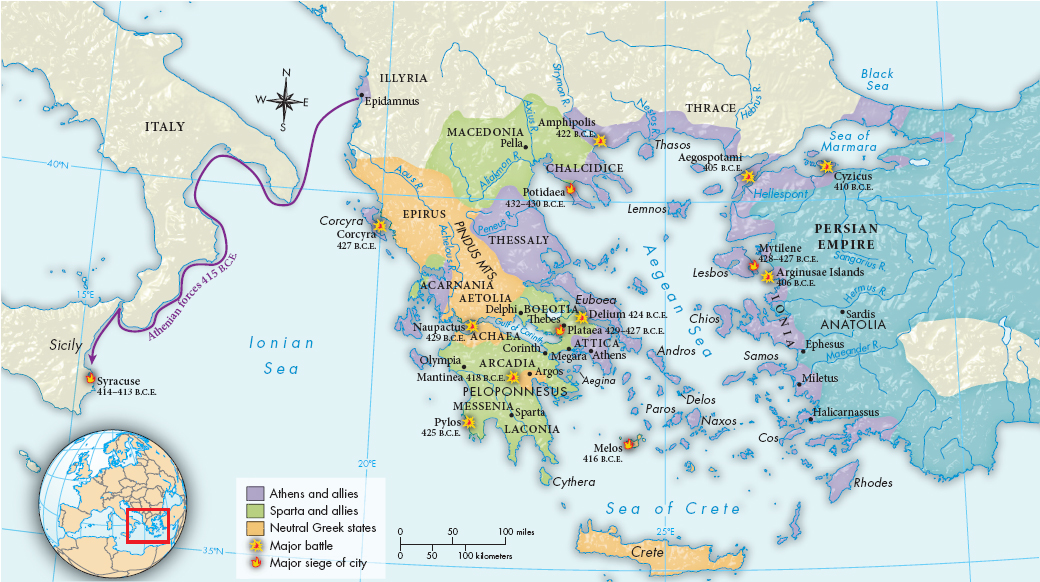Understanding Western Society
Printed Page 72
The Peloponnesian War
The Peloponnesian War lasted a generation and brought in its wake disease, famine, civil wars, widespread destruction, and huge loss of life (Map 3.3). During the first Spartan invasion of Attica, which began in 431 B.C.E., cramped conditions within the walls of Athens nurtured a dreadful plague that killed huge numbers, eventually claiming Pericles himself. The death of Pericles opened the door to a new breed of politicians, men who were rash, ambitious, and more dedicated to themselves than to Athens. Under the non-

 The Peloponnesian War, 431–
The Peloponnesian War, 431–CONNECTIONS:What does the location of the major battles and sieges suggest about the impact of the war throughout Greece?
The Peace of Nicias resulted in a cold war. But even cold war can bring horror and misery. Such was the case when, in 416 B.C.E., the Athenians sent a fleet to the largely neutral island of Melos with an ultimatum: the Melians could surrender or perish. The Melians resisted. The Athenians conquered them, killed the men of military age, and sold the women and children into slavery.
The cold war grew hotter, thanks to the ambitions of Alcibiades (al-
The disaster in Sicily ushered in the final phase of the war, which was marked by three major developments: the renewal of war between Athens and Sparta, Persia’s intervention in the war, and the revolt of many Athenian subjects. The year 413 B.C.E. saw Sparta’s declaration of war against Athens and widespread revolt within the Athenian Empire. The Persians threw their support behind Sparta and built a fleet of ships for them; in exchange they expected Ionia to be returned to them once the Spartans were successful. Now equipped with a fleet, the Spartans challenged the Athenians in the Aegean, and a long series of inconclusive naval battles followed.
In 405 B.C.E., Spartan forces destroyed the last Athenian fleet at the Battle of Aegospotami, after which the Spartans blockaded Athens until it was starved into submission. In 404 B.C.E., after twenty-